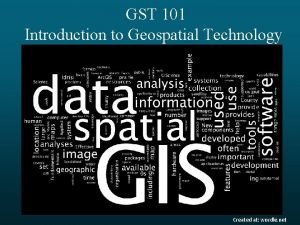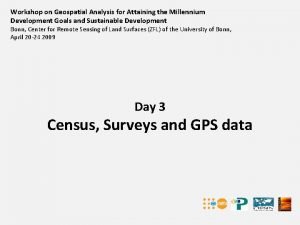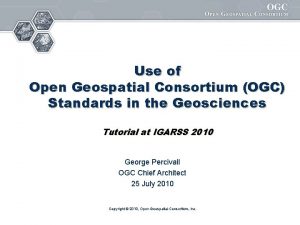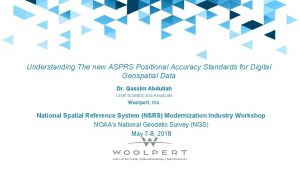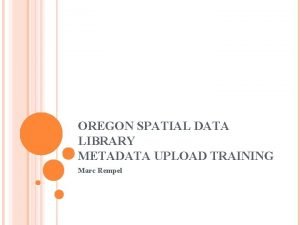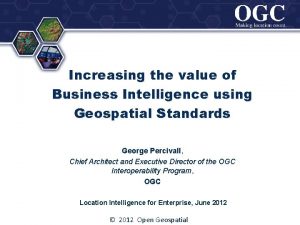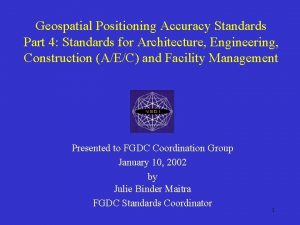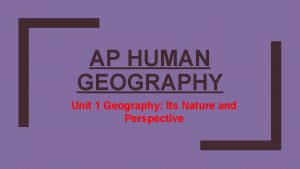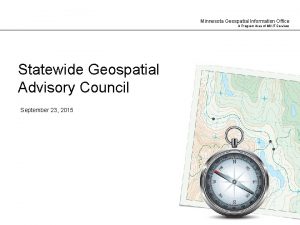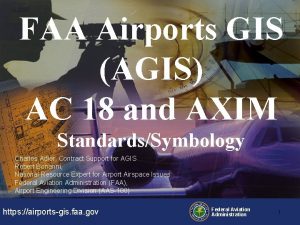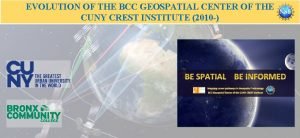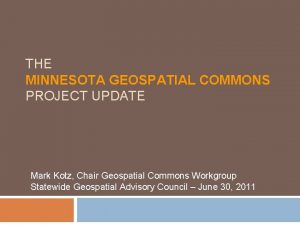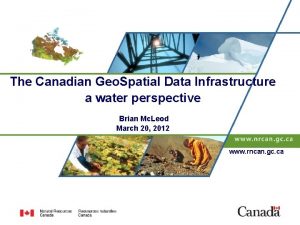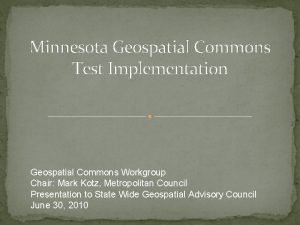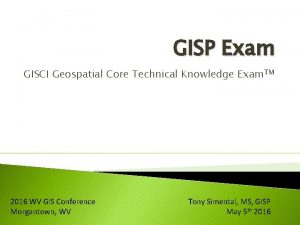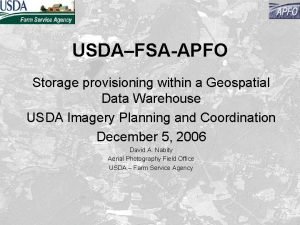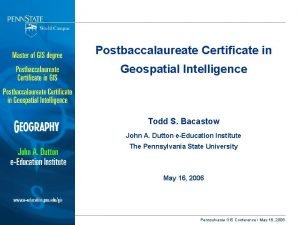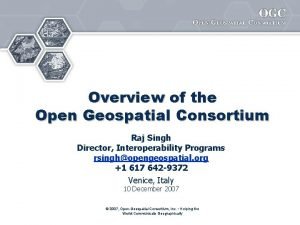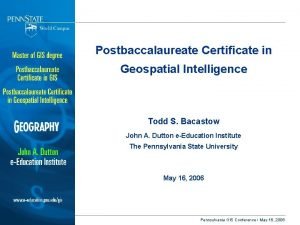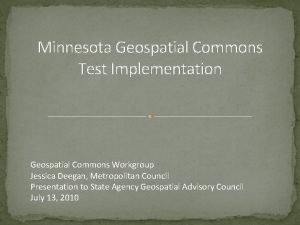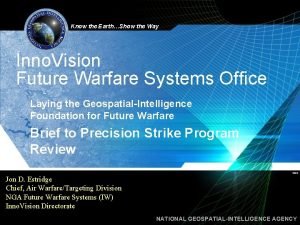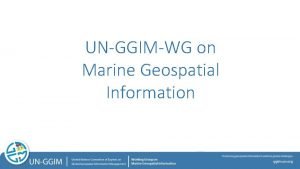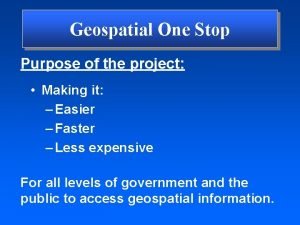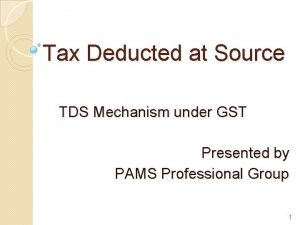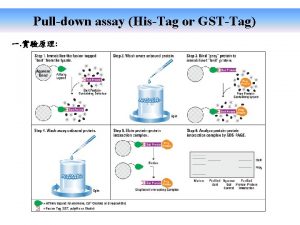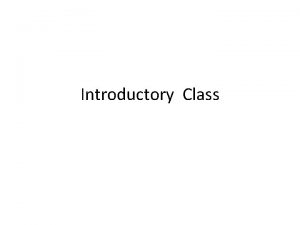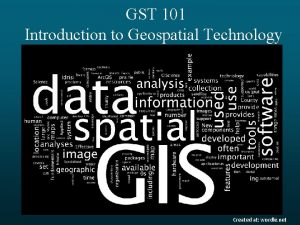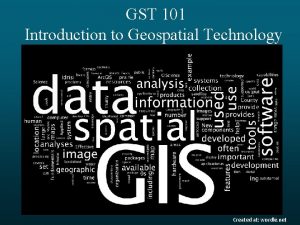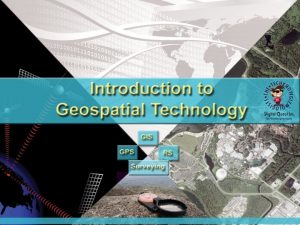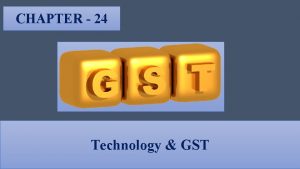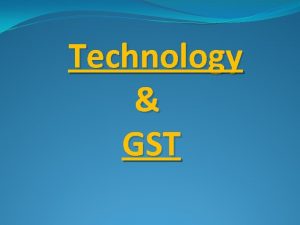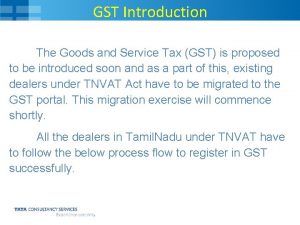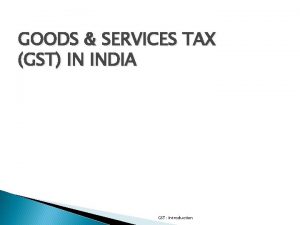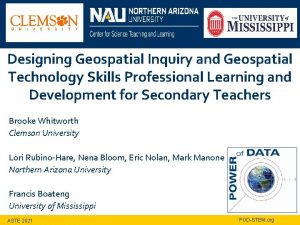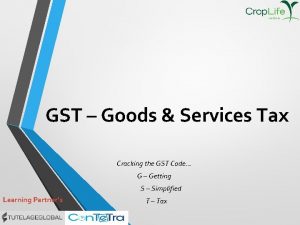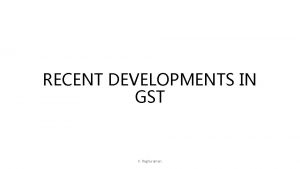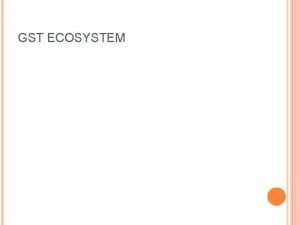GST 101 Introduction to Geospatial Technology Created at




































- Slides: 36

GST 101 Introduction to Geospatial Technology Created at: wordle. net

What is “GIS”?

What is GIS? A GIS is a computer-based system to aid in the collection, maintenance, storage, analysis, output, and distribution of spatial and non-spatial data and information.

GISs are simultaneously the telescope, the microscope, the computer, and the Xerox machine of regional analysis and synthesis of spatial data. (Ron Abler, 1988)

GIS as an Umbrella Hardware Methods Data Software Network People

What Falls Under the GIS Umbrella? • Spatial Data Services • Spatial Data Analysis • Map Making • Data Collection • Programming • …and much, much more

The Six Parts of a GIS

Six Parts of a GIS 1. 2. 3. 4. 5. 6. Hardware Software Data Methods People Network

Hardware • Powerful computers • Printing/Plotting and other visualization capabilities • Input devices • Large amounts of disk space

Software • Provides tools to: • Manipulate • Store • Query • Analyze Spatial Information • There are many free and commercial software packages.

Data • A GIS can ingest any type of data • Both spatial and non-spatial • We are currently in “Data Overload” • Visualizing data helps humans weed through it all • Half of all time spent on a GIS projects will simply be working with data

Methods • Formulas • Statistics • Analysis • Algorithms

People • • Skilled GIS Professionals Skilled GIS Users Novice GIS Users. . . Public Users ?

Network • Dissemination of data • Transfer datasets • Collaboration • Display of information • Web maps • Web Applications

How can GIS be used?

Select Examples of GIS in Use • • Cadastral Information Deliveries Military Farming Wildlife Mapping Disaster Management Infrastructure Decision Support • • • 3 D Analysis Mapping Redistricting Health Data Mining Natural Resources

The Geospatial Revolution by Penn State Public Broadcasting

Thinking about Space

Fundamental Concepts of Spatial Analysis • Space • Location • Distance

Space can be measured in absolute, relative, and cognitive terms.

Absolute space • Can be thought of as mathematical space • It involves the precise measurement of location (x, y, z)

Topological space • Can be thought of as relative space • Such as the connectivity between locations

Cognitive space Reflects people’s beliefs experiences perceptions about places

Fundamental Concepts of Spatial Analysis • Space • Location • Distance

Location • Absolute - Latitude/longitude • Relative – Site and situation • Cognitive - Place name • Nominal - “Where were you when…? ”

Absolute Location Latitude/longitude

Location • Absolute - Latitude/longitude • Relative – Site and situation • Cognitive - Place name • Nominal - “Where were you when…? ”

Relative Location Relative location can be measured using site and situation.

Site and Situation Physical attributes of a place (location) Location of a place relative to other places and human activities E. g. , terrain, soil, vegetation, water sources, built environment, etc. E. g. , 80 miles from Atlanta, near raw materials, far from job opportunities, etc.

Location • Absolute - Latitude/longitude • Relative – United States Public Land Survey Metes and Bounds • Cognitive - Place name • Nominal - “Where were you when…? ”

Cognitive Location Cognitive location refers to the personal cognitive images of places and regions compiled from personal knowledge, experiences, and impressions

Location • Absolute - Latitude/longitude • Relative – United States Public Land Survey Metes and Bounds • Cognitive - Place name • Nominal - “Where were you when…? ”

Systems of measuring and representing location (absolute, relative, nominal) are CULTURAL SYSTEMS which are embedded in different cultures and worldviews and can become inscribed in landscapes

Fundamental Concepts of Spatial Analysis • Space • Location • Distance

Distance • Absolute - physical units of measure • Relative - time, effort or cost • Cognitive - perceived

“Everything is related to everything else, but near things are more related to each other” - Waldo Tobler (Professor Emeritus, UCSB, Dept. of Geography)
 Gst 101
Gst 101 Gst 101 form
Gst 101 form Introduction of gst
Introduction of gst Millennium geospatial
Millennium geospatial Open geospatial consortium standards
Open geospatial consortium standards Asprs standards
Asprs standards Oregon spatial data library
Oregon spatial data library Geo business intelligence
Geo business intelligence Geospatial world forum amsterdam
Geospatial world forum amsterdam Geospatial positioning accuracy standards
Geospatial positioning accuracy standards Azimuthal projection ap human geography
Azimuthal projection ap human geography Mn geospatial commons
Mn geospatial commons Minnesota geospatial commons
Minnesota geospatial commons Faa nasr
Faa nasr Bcc geospatial center of the cuny crest institute
Bcc geospatial center of the cuny crest institute John williams mit
John williams mit Geo portal
Geo portal Canadian geospatial data infrastructure
Canadian geospatial data infrastructure Minnesota geospatial commons
Minnesota geospatial commons Gisci geospatial core technical knowledge exam
Gisci geospatial core technical knowledge exam Remote sensing ap human geography
Remote sensing ap human geography Usda geospatial data warehouse
Usda geospatial data warehouse Geospatial intelligence certificate
Geospatial intelligence certificate Geospatial
Geospatial Geospatial intelligence certificate
Geospatial intelligence certificate Minnesota geospatial commons
Minnesota geospatial commons Marine geospatial ecology tools
Marine geospatial ecology tools Geospatial intelligence
Geospatial intelligence Marine geospatial ecology tools
Marine geospatial ecology tools Geospatial one stop
Geospatial one stop What is utr in gst
What is utr in gst Gst deduction at source
Gst deduction at source Annexure b for gst refund
Annexure b for gst refund Gst pulldown assay
Gst pulldown assay Gst 105 use of english pdf
Gst 105 use of english pdf Philosophy and human existence gst 113
Philosophy and human existence gst 113 Section 18(1)(c) of gst
Section 18(1)(c) of gst
